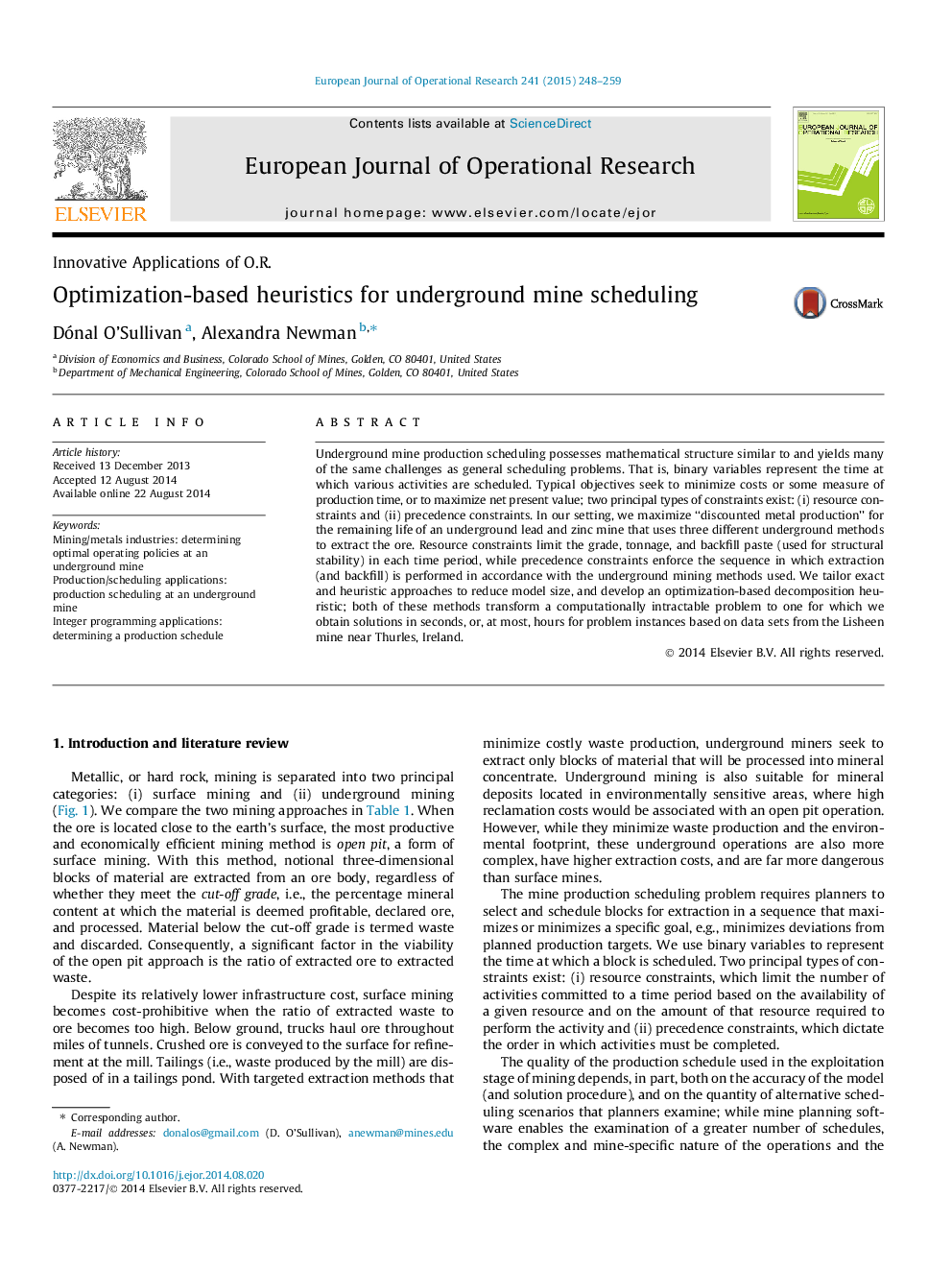| Article ID | Journal | Published Year | Pages | File Type |
|---|---|---|---|---|
| 479618 | European Journal of Operational Research | 2015 | 12 Pages |
•We develop a paradigm in which to model complex scheduling operations.•We improve the tractability of our problem using exact and heuristic methods.•We derive an optimization-based heuristic for otherwise intractable instances.•We apply our techniques to generate schedules for the Lisheen mine.
Underground mine production scheduling possesses mathematical structure similar to and yields many of the same challenges as general scheduling problems. That is, binary variables represent the time at which various activities are scheduled. Typical objectives seek to minimize costs or some measure of production time, or to maximize net present value; two principal types of constraints exist: (i) resource constraints and (ii) precedence constraints. In our setting, we maximize “discounted metal production” for the remaining life of an underground lead and zinc mine that uses three different underground methods to extract the ore. Resource constraints limit the grade, tonnage, and backfill paste (used for structural stability) in each time period, while precedence constraints enforce the sequence in which extraction (and backfill) is performed in accordance with the underground mining methods used. We tailor exact and heuristic approaches to reduce model size, and develop an optimization-based decomposition heuristic; both of these methods transform a computationally intractable problem to one for which we obtain solutions in seconds, or, at most, hours for problem instances based on data sets from the Lisheen mine near Thurles, Ireland.
